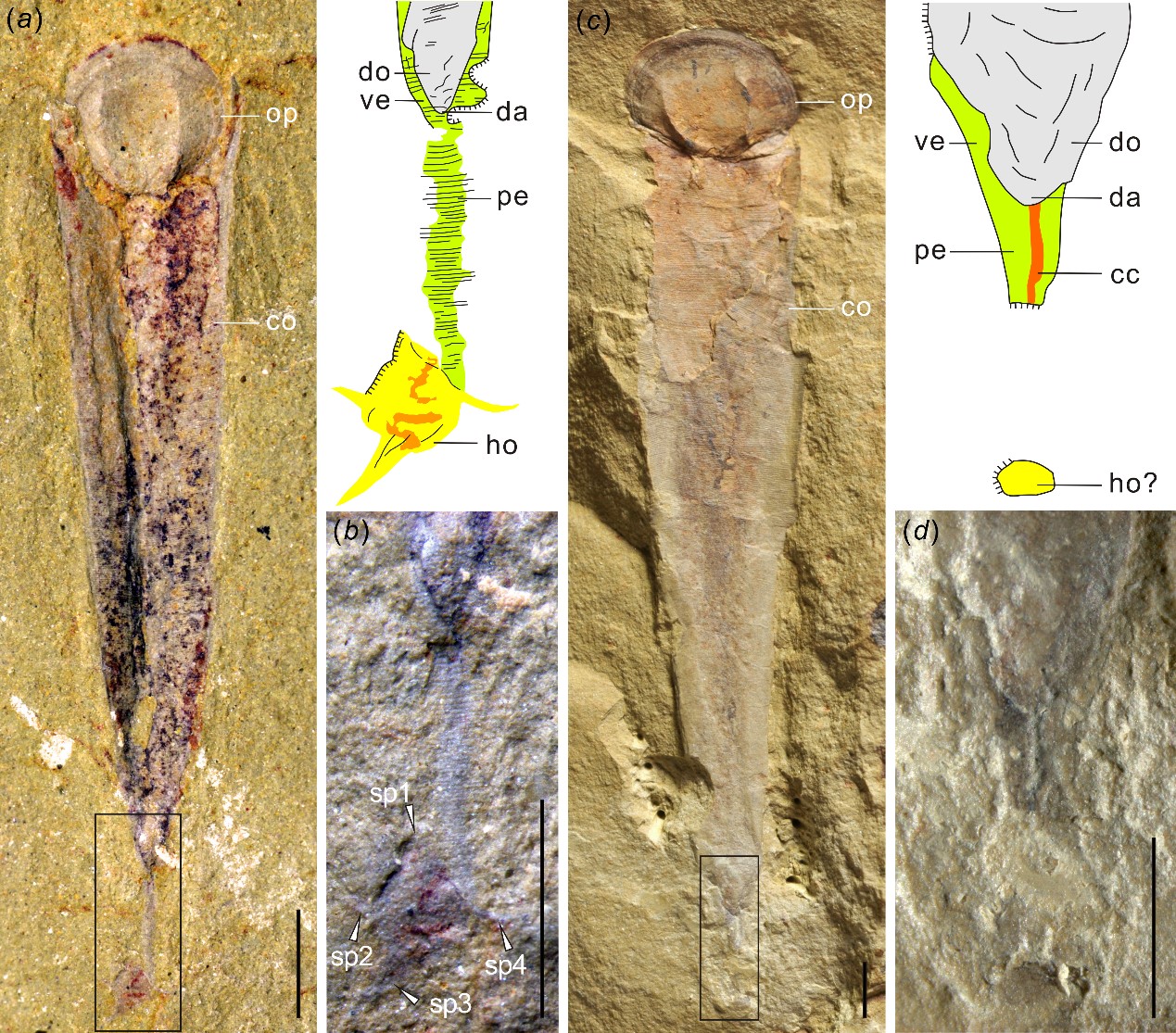
Pedunculotheca diania Sun, Zhao et Zhu gen. et sp. nov. from the Chengjiang Biota, Yunnan Province, China
Hyoliths are a taxonomically problematic group of Palaeozoic lophotrochozoans that are among the first shelly fossils to appear in the Cambrian period. On the basis of their distinctive exoskeleton, hyoliths have historically been classified as a separate phylum with possible affinities to the molluscs, sipunculans or lophophorates – but their precise phylogenetic position remains uncertain.
Recently, Dr. SUN Haijing, Prof. ZHAO Fangchen and colleagues from the Nanjing Institute of Geology and Palaeontology, Chinese Academy of Sciences with Dr. Martin Smith from the Durham University, describe a new orthothecide hyolith from the Chengjiang Lagerstatte (Cambrian Series 2 Stage 3), Pedunculotheca diania, published in Proceedings of the Royal Society B: Biological Sciences.

Reconstruction of adult Pedunculotheca diania in feeding position
The new taxon exhibits a non-mineralized attachment structure that strikingly resembles the brachiopod pedicle – the first report of a peduncular organ in hyoliths. This organ establishes a sessile, suspension feeding ecology for these orthothecides, and – together with other characteristics (e.g., bilaterally symmetrical bivalve shell enclosing a filtration chamber and the differentiation of cardinal areas) – identifies hyoliths as stem-group brachiopods.
The phylogenetic analysis indicates that both hyoliths and crown brachiopods derived from a tommotiid grade, and that the pedicle has a single origin within the brachiopod total group. Shell microstructures, in particular, the ‘canaliculate’ microstructure and ‘punctae’, those have been afforded great importance– turn out to have multiple origins across the brachiozoans.
Identifying hyoliths as stem-group brachiopods not only resolves character polarity within the group itself, that Pedunculotheca is more primitive than hyolithides and other orthothecides which are united by the secondary loss of a pedicle and the morphology of their metamorphic shell; but also indicates a profound adaptive strategy change at the end of the Cambrian, that the dramatic decline of stem brachiopods and linguliforms with a high metabolic overhead were supplanted by the radiation of lineages expert in economic living.
Download:
